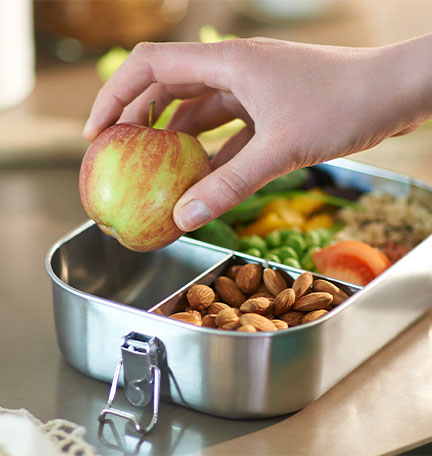How to create a monthly budget
If you want to stop living paycheck to paycheck, you can start by setting limits on your spending. Putting a plan in place will stop money from evaporating as soon as it materializes. Here are six steps that outline how to budget money in a way you can live with.
Step 1: Change your mindset about budgets
Rather than thinking of a budget as a drastic monetary diet, see your spending plan as a way to buy your financial freedom. “Budgeting gives you more control of your money — and life,” says Samantha Gregory, Rich Single Momma blogger
Step 2: Compare income to expenses when budgeting
First, add up your take-home pay — after deductions and taxes — without including bonuses or tax refunds. Next, track all expenses, no matter how small, including money set aside for charitable giving. Keep this up for at least a month so that you can get a reliable view of your fixed and variable expenses.
Place each of your expenses into one of three columns:
- Fixed: This includes necessary bills that stay the same from month to month, including mortgage or rent, insurance, alimony, and loan payments.
- Flexible: These are necessary expenses that vary each month, such as utilities, groceries, and gas.
- Discretionary: These are unnecessary expenses, such as dining out and other entertainment costs.
Add your fixed and flexible expenses, erring on the side of caution for bills that change regularly. Then, subtract these costs from your monthly income.
Before assigning the rest of your income to discretionary spending, remember to pay yourself first. Determine how much you can save each month, and make sure that is the first money you move. Putting away at least 10 percent of your take-home income in a separate savings account can help you prepare for an emergency or reach a long-term goal.
Step 3: Use tools and technology to help budget
Plenty of high-tech and low-tech tools can also help you learn how to budget. It’s just a matter of knowing which one works for you. “It’s trial and error,” Gregory says. “You’ve got to find what fits your personality and lifestyle, or you may find it difficult to stick to it.”
For instance, Regions’ budget calculator can help you categorize and track spending for budgeting purposes. Additional online budgeting tools are available from Regions, Quicken®, QuickBooks™, and Mint®. Some of these tools allow you to allocate expenses based on percentages, plug in your monthly pay, and create an automatic spending plan. “It’s easy to see where you fall short,” Gregory says.
Regions’ My GreenInsights® (MGI) is a free online tool for customers that uses simple charts and automatic categorization to build your budget and follow your cash flow. You can also see all your finances, including accounts at other financial institutions, in one location and set up savings goals and alerts.
For example, the MGI cash flow calendar tool allows you to input future deposits, as well as fixed, flexible, and discretionary spending. The customer can determine what type of cash flow they will have over the next several months and can help with their cash management.
Even simple Excel spreadsheet templates may offer categories such as housing, groceries, education, and transportation for budgeting purposes.
Step 4: Decide what you really want
Once you have a budget in place, set short-term or long-term priorities for unnecessary purchases like a vacation or concert tickets. This can help you avoid impulse spending. If there are just too many options to choose from, try to think strategically. List the pros and cons of prioritizing each goal or ask friends and family to vote on what they think you should move to the top of the list.
Remember, if you cut out all the fun, your budget will be as hard to adhere to as a strict diet. So leave yourself some financial flexibility.
Step 5: Find ways to pinch pennies
If your expenses exceed your income, look for opportunities to start paring back, such as:
- Making your own coffee and packing a lunch
- Buying generic products over brand names
- Dropping premium cable channels
- Going out to eat less frequently
- Borrowing outfits from friends or shopping at thrift stores rather than refreshing your wardrobe at the mall
Step 6: Switch your budget to auto pilot
Set up direct deposit for your paychecks, with percentages funneled to savings and bill payment accounts to keep funds off-limits. Automatic billing can also help you avoid late payment fees.
“If it’s out of sight, it’s out of mind,” Gregory says.
Following these six steps can help you achieve your financial goals, whatever they may be.
Open a checking account online today. Need help deciding? We can help you find the right account for you.






